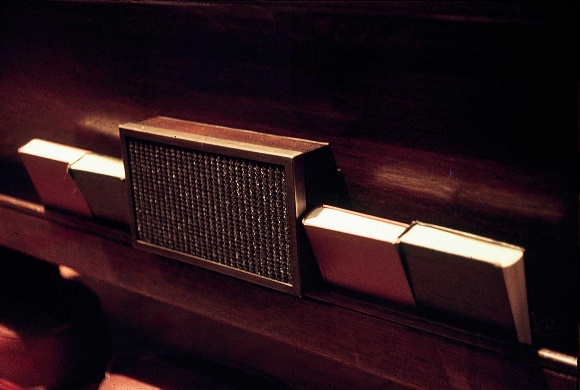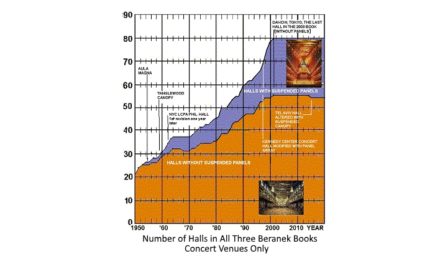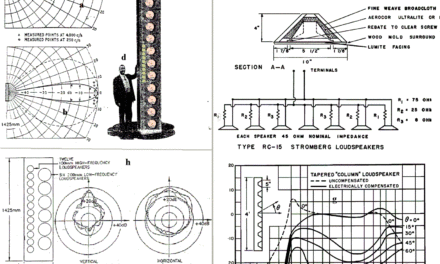Fig. 1. St. Thomas Episcopal Church pew-back loudspeaker
Dedication
This retrospective is dedicated to Larry King, comfortably, retired and L Gerald Marshall, recently passed-on, whose collaboration was important for all the Klepper Marshall King projects here discussed. Thanks are also due to the many sound-system installers, including, but not limited to Ancha Electronics, Boston Light and Sound, Commercial Radio and Sound, Industrial Communications, Lake Systems, Sound Systems Incorporated, Rosner Custom Sound.
Meeting a special acoustical need led to meeting a more general architectural need.
My first efforts (1957) at reconciling speech demands for high intelligibility, and consequently low reverberant energy, with music demands demanding moderate-to-high reverberant energy, employed highly directional loudspeakers, at first primarily Altec Lansing multicellular horns with compression drivers.1,2 These placed most amplified speech sound energy into the sound-absorbing congregation, minimizing that directed at sound-reflecting wall and ceiling surfaces. I was using the tools and technics already in place at Bolt Beranek and Newman and the advice of Frances Weiner, my senior there in sound-system design. But speech energy for choir-stall pews was not provided by the main central sound systems. Because of the close proximity of the lectern and pulpit microphones, and pew railing, seat-back loudspeakers adopted from car-radio use were typically used. When Henry Kloss at KLH developed the 12.5 4-inch loudspeaker, at first for a number of line-source special loudspeakers for a Sarah Caldwell, Metropolitan District Commission tent summer Charles-Riverbank Theater,3 then for the remarkable KLH compact FM radio, these became the loudspeakers of choice. After the use of these KLH loudspeakers in a dense ceiling-distributed system at Dulles Airport, for which Altec developed the pioneer noise-operated-automatic-level-adjustment (NOALA)4 Altec Lansing then produced their 405 competitive loudspeaker, giving contractors a choice.
In 1995, Lawrence Phelps, Tonal Director at the St. Hyacinth, Quebec, organ-builders Casavant-Freres, asked me, at Bolt Beranek and Newman, to design and specify a speech-reinforcement sound system for the Basilique du Notre Dame Cap de la Madeleine, Three Rivers, Quebec, and sent plans and a photograph. I don’t remember whether the organ-builders, the architect, or the Catholic Diocese was the client. I do remember that Larry Phelps offered to and did assist me in testing and making adjustments (as well as providing local transportation and more). As can be seen in Figure 2, multicellular-horn loudspeakers are employed, with left and right arrays to optimize performance for both lectern and pulpit. And pew-back and pew-railing loudspeakers were employed for the choir stalls. Larry Phelps commented that speech was just as intelligible in the choir areas as in the main seating areas covered by the twin stacked multicellular horn arrays.
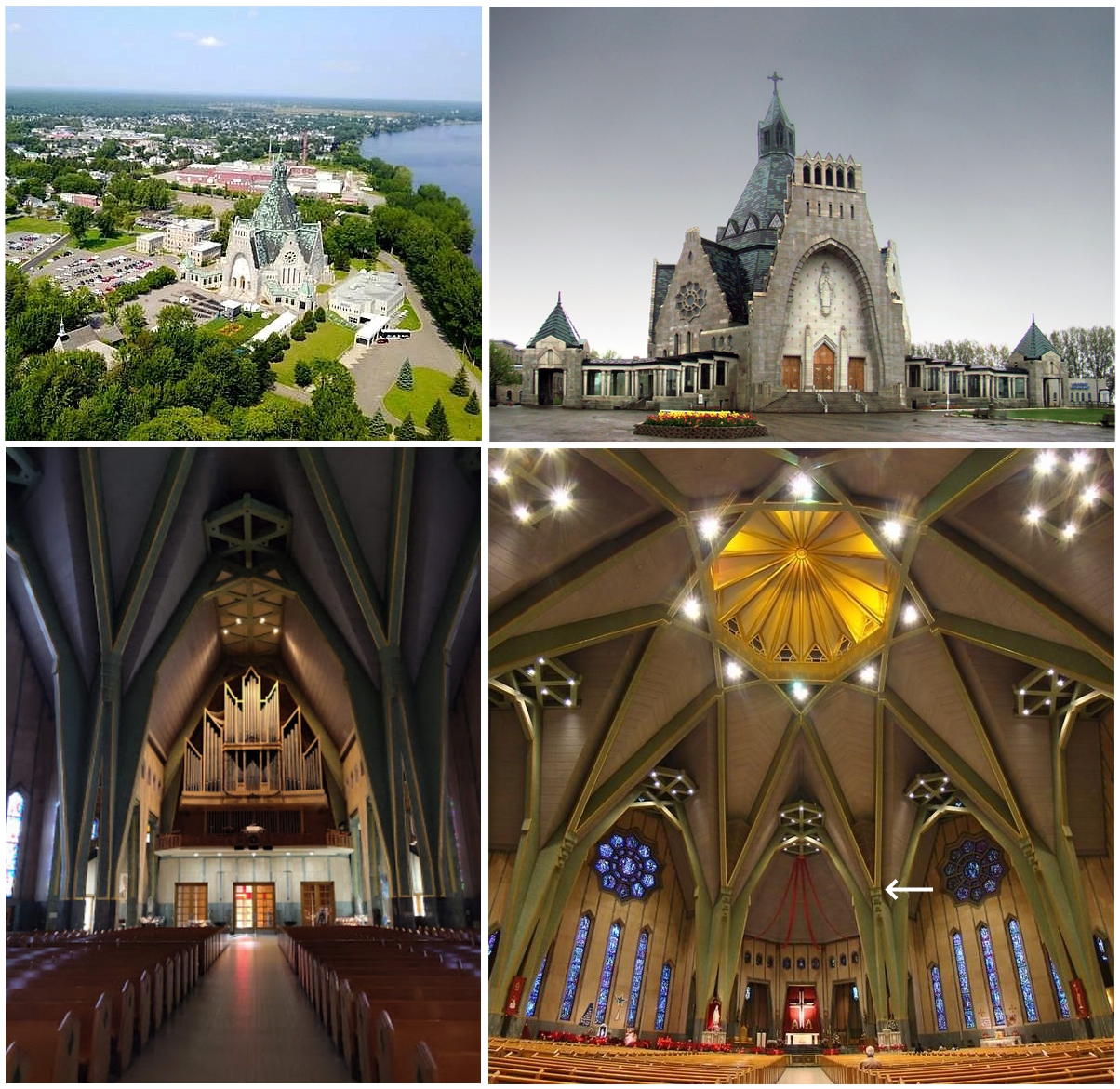
Fig. 2. Basilique du Notre Dame Cap du la Madeleine. The white arrow points to the stacked multicellular horn loudspeaker system on the right, and the left system is a mirror image. Adrien Dufresne architect, Casavant-Freres organ. Photos directly from Basilique’s website
A few days before leaving for Three Rivers (by train, see notes). Robert Newman handed me the task of designing a sound system for the Bishop Angie Smith Chapel at the University of Oklahoma, under design by Pietro Bellusci, Bob’s colleague as a professor at the MIT School of Architecture. The room would be reverberant, with organ, choir, and congregational singing important, along with speech intelligibility. Professor Bellusci was adamant that no large loudspeaker system should be considered, even with the possibility of paint to reduce visual obtrusiveness. I’d already had some experience with systems using line-source (column) loudspeaker systems, but Larry’s comment caused me to consider if possibly this new chapel might be the pioneer for a pew-back system for the whole congregation. Larry Phelps thought it was an excellent idea “if they can afford it.”
When I finally got back to the Cambridge, Massachusetts, office, after a stop at St. Hyacinth for discussions on other projects and a day spent with Ranger Farrel at the BBN New York City branch office, I met with both Bob Newman and Leo Beranek to discuss the all-pew-back idea. With their approval, I did the initial design work. This was turned over to the project’s Electrical Engineer and the University’s own Audio-Video staff for implementation. After the Chapel’s opening, Bob Newman received news that the sound system, despite lack of directional realism, was a success. But the lack of directional realism made it a candidate for replacement by the new steered-array technology (see Figure 5). This may have occurred already, if the pew-back system was not modernized with digital delay technology.
Signal Delay, Tape-Loop, Acoustical Tube, then Digital Delay
The success of the Oklahoma project did not lead to an immediate change in other work at Bolt Beranek and Newman. The huge increase in number of loudspeaker locations and conduit and wiring requirements for pew-back systems meant central cluster systems were more economical, means were found to make them unobtrusive visually, directional realism was usually obtained, and the few exceptions usuaslly led to ways of using the column or line-source loudspeaker approach.
.
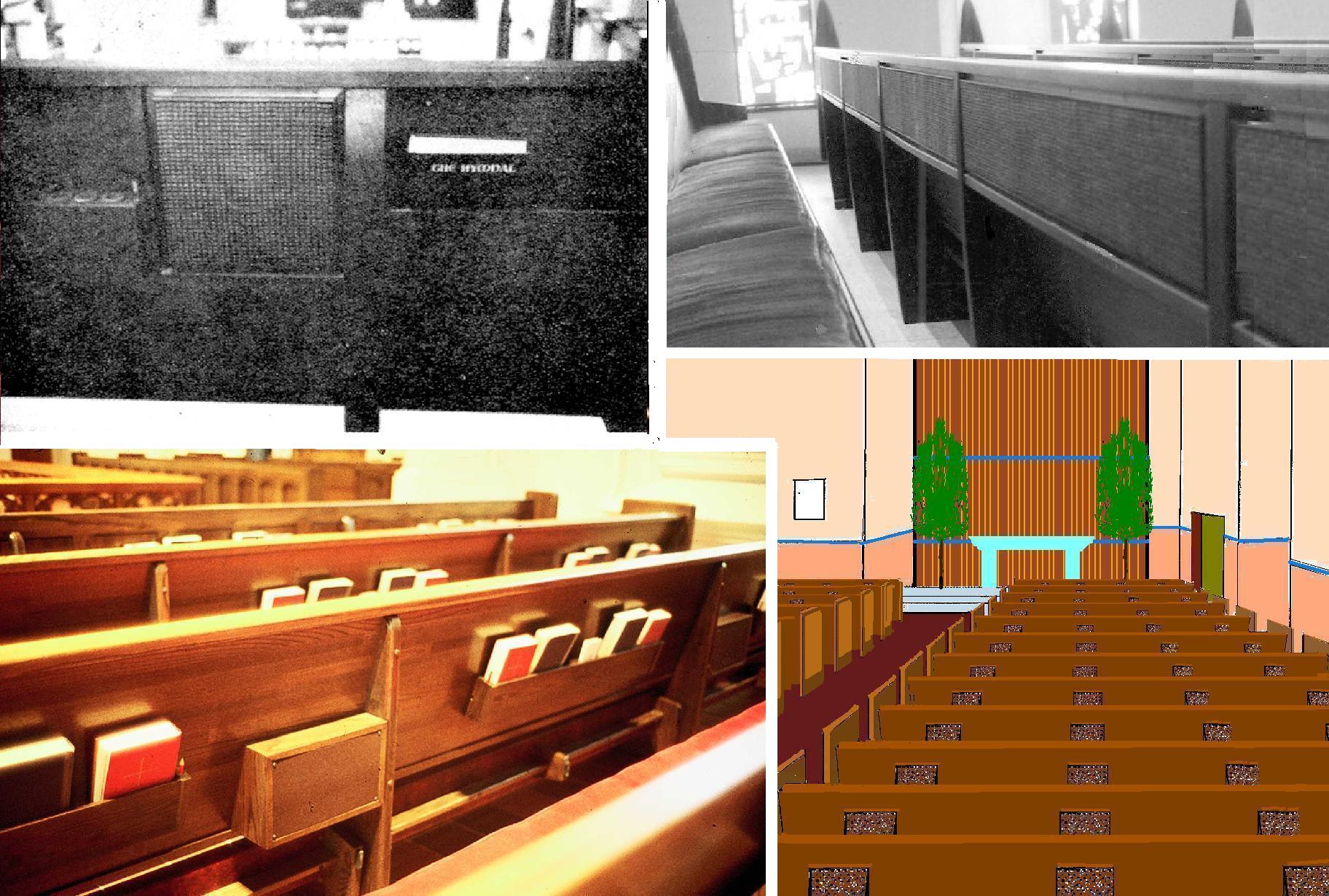
Figure 3. Top: National Presbyterian Church, Washington, DC. Harol Wagoner, architect, Aeolian Skinner organ. Continuous grille for pew-back loudspeakers shown on right; louspeaker enclosures visuible in balcony, as on left.. Bottom, Left, Good Shephard, Erie, Pennsylvasnia, Right, St. Mary’s, Wilson, North Carolina.
1966 presented another opportunity, however. Architect Harold Wagoner, who specialized in traditional-appearing church design, made the same demands for the new National Presbyterian Church, Washington, DC, as Pietro Bellusci had made for the Bishop Angie Smith Chapel. However, the Washington church was to be considerably longer, and lack of signal delay for amplified speech at the rear would result in an echo effect from the arrival of live and amplified sound at different times. An acoustical-tube delay unit with driver-loudspeaker at the front and an efficient, sound-absorbing glass-fiber termination at the rear with ½-inch diameter condenser micdrophones barely protruding into the tube and spaced about ten-feet apart along the length of the tube provided speech audio with delays to the zoned pew-back system that again employsd KLH 12.5 loudspeakers. (Fig. 3) Oklahoma City University has the first worship-space pew-back sound-system, but National Presbyterian the first that preserved directional realism.2 After digital delay units were developed by Lexicon and Industrial Research Products, local Washington people modernized the system wth digital delay.
The disadvantage of the acoustic-tube method of delaying speech signals is the introduction of frequency-response irregularities inherent in any louspeaker, even the best, added to those of the loudspeakers used for listener coverage. The tape-loop and magnetic disk devices had superior audio quality, but magnetic material does wear-out after many uses, and tape-loops can break. In 1971 and 1972, Larry, Gerry, and I were in the middle of finalizing the specifications for the pew-back sound system for St. Thomas Episcopal Church, when information on both Lexicon’s and Industrial Research Products’ digital delay units arrived, with offers to provide demonstrations, which we accepted. Digital delay solves both problems. The initial units did not have sufficient dynamic range (in other terms, signal-to-noise ratio) for orchestra or organ music, but neither did the tape nor acoustic tube units, and the performance of newer digital devices meets that requiremrent.
The selection of a pew-back system for St. Thomas resulted from the willingness to spend the money for the best possible systrem, the visual aspect, the need to assure good intelligibility behind columns that would mask direct sound from the front of the church, and the selling job accomplished by the success of the KLH table-model compact FM radio. Thev influence of G. Donald Harrison, the famed Tonal Director of Aeolian Skinner Organ Co., cannot be discounted, as he also suggested that idea. The intelligibily achieved by the sound system permitted conversion of a primarily sound-absorbing ceiling to a sound-refecting one, for the benefit of all the varied and important music uses of the space, and in-particular, congregational singing. The system has been improved over the years with more advanced electronics, keeping the original loudspeakers, and has successfully provided reinforcement for at least one clavichord concert. The adjustment of the system benefited by the use of the developmental model of the Crown-Techron Time-Energy-Frequency analyzer, the acoustic measurement system’s first worship-space project use. 5,6,7,8
Other Klepper-Marshall-King-designed pew-back chuch sound systemas followed, including River Road Baptist Church in Richmond, Virginia, the Episcopal Church of the Good Shepherd, Erie, Pennsylvania, and St. Mary’s Catholic Church, Wilson, North Carolina. The KMK-designed system at Congregation Rodef Shalom, Pittsburgh, uses the Radio Shack Minimus lodspeaker, a frameless 3-1/2-inch cone loudspeaker integral with its small plastic enclosure, the enclosure acting as frame, for considerable cost reduction. Joel Lewitz, at Paoletti Lewitz Assoiciates, designed a sound system similar to St.Thomas for Congregation Emanu-El, in Los Angeles. Edward Seeley, shortly after retiring from Altec, as an independent consultant designed the Trinity Episcopal Church, Wall Street, pew-back system. This was installed with tape-loop delay and later converted to digital.
Future
The invention of computer-controlled steered-line-source and array loudspeaker systems, comntaining many small loudspeakers, with signal-level, phase-and-frequence-respose, and very short delay, all individually under computer control for each loudspeakers, has reduced the area of application for pew-back loudspeaker systems. The newer-concept systems can be placed flush in the front wall with the sound produced steered downward to the congregation and/or audience. The visual intrusion of large, highly-directional frontal systems is thus reduced cconsiderably. There may still be special cases requiring the pew-back concept, however.9
Figure 4: Pew-back systems minimize reverberant energy by the close proximity of all louspeakers to sound-absorption. Most other successful systems do so by the directional charcteristics of the loudspeaker or loudspeaker system.


Figure 5: Computer-controlled, steered-line-source loudspeaker with three programmable beams.
Notes and References
1. This retrospective is inteneded as a summary history, and the hard data and additional design details are in the references, many on this website. The very first technical paper for the simple idea of putting the speech sound-energy largly into the sound-absorbing audience-and/or congregation is P. H. Parkin and J. H. Taylor, Speech reinforcement in St. Paul’s Cathedral, Wireless World 58:2, 58-61 and 58:3, 109-101 (1952), and reprinted in the Journal of the Audio Engineering Society, 54, 67-74 (2006). My 1959 paper showed a possibility in that direction via architectural means, D. L. Klepper, “First Presbyterian Church, Stamford, Connecticut,” J. Acoust. Soc. Am. 31, 879–882 1959. Forty-eight years of hindsight suggests the words “early sound energy” should have been used instead of “direct sound” throughout this paper. A good overall summary of my own involvement in the sound system approach is “An autobiographical assessment of the importance of the early-to-reverberant sound-energy ratio, “Clarity,” in speech and music acoustics” on this website.
2. D. L. Klepper, “Sound Systems in Reverberant Spaces for Worship,” Journal of the Audio Engineering Society (JAES), Aug. 1970, also in Sound Reinforcement, AES Anthology, New York, 1978, p. E-46-E56. In addition to providing guidance toward the basic types of sound systems applicable for the purpose of speech clarity in a reverberant space, this is the first published paper that describes the pew-back approach. The book, M. Kleiner, D. L. Klepper, M/ Torres, Worship Space Acoustics, J. Ross, publishers, Fort Lauderdale, Florida, 2010, has further details on each type of system, presents examples in Jewish, Christian, and Muslim houses-of-worship, and goes beyond sound systems to discuss room acoustics, placement of musicians and instruments, noise control, and sound isolation.
3. Klepper, D., “Behind the Actor’s Back,” Journal of the Audio Engineering Society, 14:7, July 1966, and Sound Reinforcement, an Audio Eng. Soc. Anthology, New York, 1978, p. E-19-22.
4. Altec Lansing catalogues 1960s and 1970s.
5. D. L. Klepper, “The acoustics of St. Thomas Church Fifth Avenue”, Journal of the Audio Engineering Soc. 43:7/8, 99-601 (1995), also Sound Reinforcement Vol 2, Audio Engineering Society, New York, 1996, pp. 392-394.
6. L. G. Marshall, “An acoustics measurement program for evaluating auditoriums based on the Early/Late Sound Energy Ratio,” J. Acoust. Soc. Amer., 96, 2251-2261 (1994).
7. L. G. Marshall, “An analysis procedure for room acoustics and sound amplification systems based on the Early/to Late Sound Energy Ratio,” Journal of the Audio Engineering Society, 44, 373-381 (1995), reprinted in Sound Reinforcement, Vol. 2, Audio Engineering Society, New York, 1996 pp. 380-388.. C. Whitney and D. Clayton, 147th Meeting, 75th Anniversary, Organ Recital (program). Acoust. Soc. of Am, Melville, NY, p. 1, (2004)
9. Book cited in reference 2, page 166, next-to-last paragraph. Detailed information bis provided in the catalogues of all major sound-reinforcement system manufacturers. The website www.claytonacoustics.com has examples of successful challenging projects using steered-array loudspeaker systems.
However, the reader may wish to read the “History Repeats Itself” article on this website. Note the discussion of a New York City Episcopalian Church, where the Pastor had an active part in the design of the speech sound amplification system. Despite using large directional horns, the architecture of the church’s interior, and the excellence of the pastor’s concept, meant no visual intrusion at all. I have been told that recently a side-by-side comparison was made with the new steered-array technology, and the directional horn system was considered the better of the two.
Train Travel
The joint Boston and Maine – Canadian Pacific Alouette, the day train that was the last between Boston and Montreal, was discontinued two weeks before my trip to Three Rivers. The twice-daily Boston – Portland trains still had a few months to go. Friday and Sunday late-afternoon, late Spring, Summer, and early Autumn, Grand Trunk – Canadian National connected Portland and Montreal. And Canadian Pacific was running its relatively frequent Montreal – Quebec service that stopped at Three Rivers. I could buy one ticket for the three trains (three coupons) at North Station. The taxi between the two stations in Portland was shared. A couple and one other man were making the same connection.
The train to Portland lacked any meal service, so I was quite hungry. I learned that I could pay a little cash and upgrade to parlor seating in the parlor car at the rear of the train that had one seat left for sale. There, good meals were served. The car was named Alouette!
On the overnight between Montreal and Penn Station, NYC, the late John Weaver, one of America’s great organists and choir conductors, had the roomette adjacent to mine. Twelve years earlier, I had recorded his
first concert at Boston’s Church of the Advent, using equipment borrowed from the MIT Acoustics Laboratory, when he was 18.
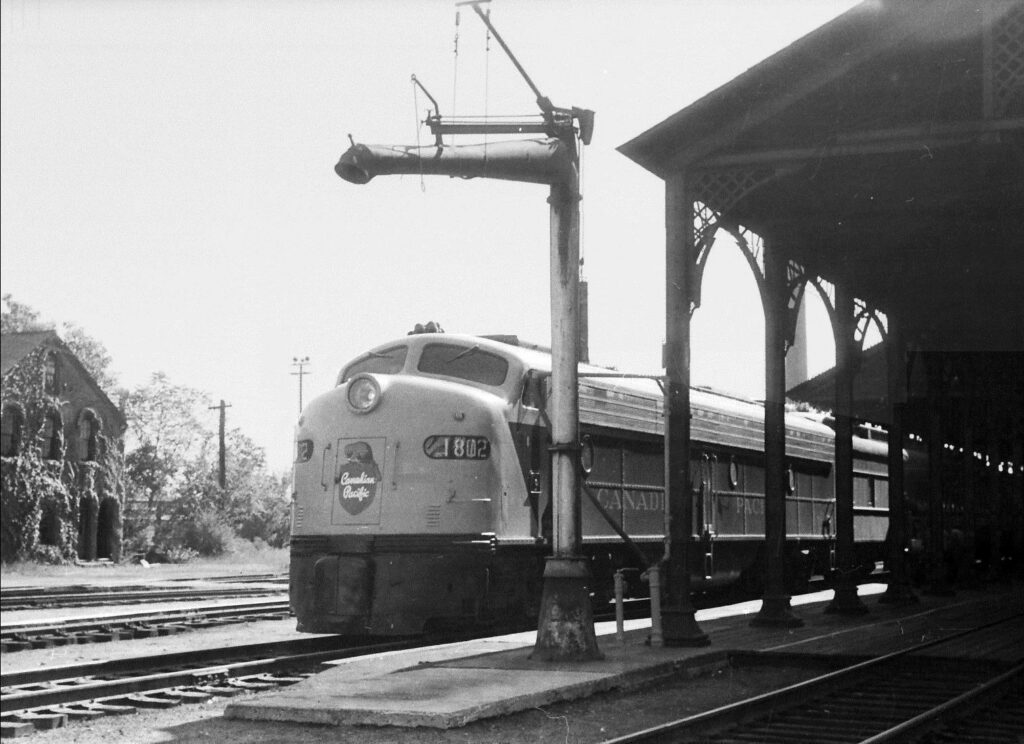
Figure 6: An early-1950s Boston – Montreal Alouette stops at Concord, New Hampshire’s State Capitol
About the Author
David Lloyd Klepper is currently a student of Rabbinics at Yeshivat Beit Orot, Jerusalem, Israel, having moved to Israel in 1996 from his position as President of Klepper Marshall King, White Plains, NY, Acoustical Consultants, and as Adjunct Professor of Architectural Acoustics at City University, New York City. Before 1971 he was a senior consultant at Bolt Beranek and Newman, starting his consulting career there in May 1957. He received his SM and SB degrees in Electrical Engineering from MIT, and between times served as Assistant Audio-Radio Member of the PsyWar Board at Fort Bragg, NC, during the Korean conflict, leaving active duty as a 1st Lt. He provided acoustical advice for over 200 worship space buildings, including the National Presbyterian Church, Washington, DC, St. Thomas Church Fifth Avenue, New York City, the Capetown, South Africa, Anglican Cathedral, River Road Baptist Church, Richmond, Virginia, Young Israel of Southfield, Michigan, and Boston’s Holy Cross Cathedral. In this capacity, he was a pioneer in application of digital delay and electronic simulation of reverberation in worship spaces, and pew-back speech reinforcement. Publications include 40 papers in professional journals, a coauthor with Professor Kleiner and Father Rendell Torris of the book Worship Space Acoustics, JRosspub.com., and Editor of the two Sound Reinforcement Anthologies of the Audio Engineering Society. He is a fellow of both the Acoustical Society of America and the Audio Engineering Society, past Emeritus Board Certified member of the Institute of Noise Control Engineering, and a member of both the American Guild of Organists and the Organ Historical Society. He also belongs to a number of railroad and public transit interest organizations. You may contact Klepper at ddaveklepper1@gmail.com.

